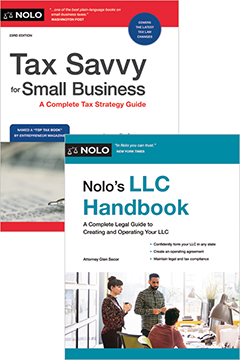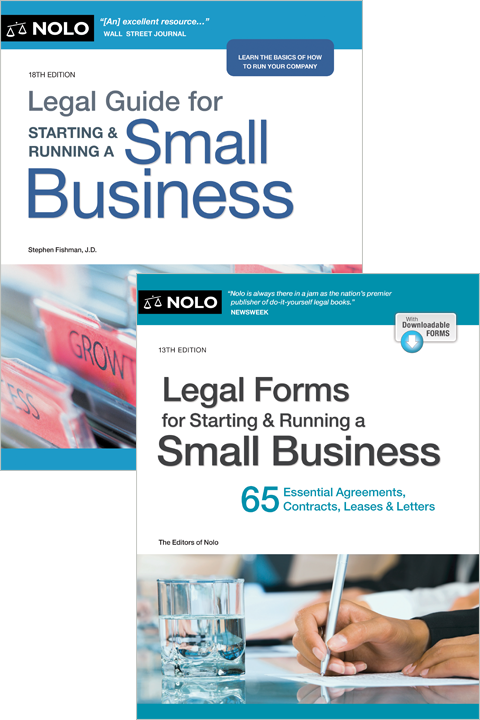In the future, your business might need to downsize its rental space. You can negotiate for a sublet and assignment clause or contraction rights to give your business flexibility in its commercial lease.
When you're looking for commercial space, you'll be asking for just the right amount of square footage, for the time period you expect to remain in that location. But pressing business needs (positive or negative) could develop and require you to give up part of your rental while you occupy the rest, or to leave before the lease ends and turn the entire space over to someone else.
Because you can't anticipate these needs now, you'll want to make sure your commercial lease provides maximum flexibility. You'll want to negotiate your lease to include a sublet and assignment clause, which gives you a mechanism for turning all or part of the space over to another tenant before the term ends.
Subleases and Assignments: What's the Difference?
Both subletting and assigning involve transferring your lease obligations to another tenant. But there are legal and practical differences between subleases and assignments.
What Is a Sublease?
If you transfer just part of your leased space to another tenant while you remain on the property—on a temporary or permanent basis—it's called a "sublease." If you transfer the entire rental to another tenant for a period of time while you move out, that too is a sublease. For example:
- The warehouse space John rents was too large when his business slowed down. He considers subletting one corner to another tenant for one year, hoping that after that, business will pick up and he'd need the space again. John's partner is less optimistic and wants to sublet the corner for the remaining time on the lease.
- Wendy occupies her retail space, devoted to winter sports gear, during the fall, winter, and early spring months. But due to low demand in the summer months, Wendy subleases her space to Paul, who turns the space into a clothing and gear shop for hikers during the summer and late spring. During the months when Paul is subleasing the space, Wendy packs away her inventory and stores it elsewhere to return later in the year.
Unless your lease prevents it, you can rent to anyone you like and charge any rent you choose. The person who subleases your space is called a "subtenant." In a subleasing arrangement, the subtenant pays rent to you and you continue to pay the landlord under the terms of your lease.
If the subtenant fails to pay the rent, you have the power to terminate the sublease, evict the subtenant, and retake the space, just as your landlord can do to you. And if the subtenant violates any of your lease terms (such as erecting a sign in violation of the sign clause in your lease), your landlord has the right to terminate your lease.
What Is an Assignment of Lease?
By contrast, an "assignment" occurs when you transfer all of your space to someone else (called an "assignee") for the entire remaining term of the lease. As you are with a sublet, you're free to choose your assignee and determine the rent unless your lease says otherwise.
In an assignment, the new tenant pays rent directly to the landlord. Importantly, since you've given away all of your interest in the lease, you have no right to retake the property or to evict the assignee for nonpayment of rent.
Tenant Responsibilities Following a Sublet or Assignment
A sublet or assignment doesn't relieve you of some or all your responsibilities under your own lease. On the contrary, under either arrangement, you're still responsible for paying the rent if the subtenant or assignee fails to pay. You're also responsible for making good on other lease obligations, such as paying for damages and keeping insurance policies current. (However, when you assign a lease, you might have less responsibility for guaranteeing non-rent duties than when you sublet.)
You'll be free of these future financial obligations only if the landlord releases you in writing.
Types of Assignment and Sublease Clauses
Here are the various clauses you might find in your landlord's commercial lease.
No Assignment or Sublease Clause
Your landlord's lease could simply not contain an assignment or sublease clause. What then? You'll need to look at your state's laws on commercial leases for guidance. Your state's laws might allow you to sublet or lease your commercial property:
- without getting your landlord's consent regardless of what the lease says (in other words, you have a right to sublease or assign your lease)
- without getting your landlord's consent as long as your lease doesn't explicitly prohibit it; or
- with your landlord's consent.
In the states that require the landlord's consent, your landlord might only be allowed to refuse the sublease or assignment as long as it's reasonable to do so (discussed more below). In other states, it might be up to the landlord's discretion whether to refuse an assignment or sublease.
So, if your lease doesn't have an assignment or sublease clause, then you should first look at your state's laws.
Prohibition Against Assignments or Sublets
Your lease might have a short, sweet "No sublets or assignments," period. If that's all there is—no qualifiers such as "without the landlord's consent"—then you can't do it. Of course, if you want to assign or sublet during the life of the lease, you can always approach the landlord and ask to reopen the issue.
Landlord's Reasonable Consent to a Sublease or Assignment
Many leases prohibit subleases and assignments without the landlord's consent but provide that the landlord will be reasonable when evaluating your proposed sublease or assignment. Courts have developed a fairly uniform way of determining whether a landlord has acted reasonably when evaluating a would-be transferee (sublessee or assignee).
When you negotiate the assignment and sublease clause, you and the landlord can place the same standards in your clause. Having these standards spelled out in the lease will help you evaluate a proposed transferee before you even present the applicant to the landlord.
Your lease clause should contain three conditions for acceptance of a sublessee or assignee. If any of the three conditions aren't met, the landlord can reasonably say no. Conversely, if the transferee passes all three, a rejection will be unreasonable.
- Is the transferee financially healthy and likely to conduct a profitable business?
- Will the transferee use the space according to the landlord's rules and plans—for example, as to how the property is used?
- Does the transferee have an acceptable business reputation—for example, a positive credit history and clean history (no illegal activities)?
The reasonable consent rule gives both tenants and landlords the flexibility and control they each need. If your lease includes this standard for evaluating transferees, you and the landlord need to give some real meaning to terms like "financially healthy." For example, you might agree that the standard of "financially healthy" means that the newcomer has turned a profit in two of the preceding three years.
Contraction Rights: An Alternative to Sublet and Assignment Clauses
Instead of negotiating for a sublet and assignment clause, you might find contraction rights more appealing. A contraction clause gives you the option to lease less space than you originally signed your lease for—for example, if you decide to outsource certain parts of your business. This clause is the opposite of an expansion rights clause, which allows you to take more space in the building if you need it.
Whatever the reason you find yourself with empty space, you'll want to get rid of it and save some money. A contraction option in your lease will give you the flexibility to return some space to the landlord if you need to do so, and, in doing so, lower your rent.
Keep in mind that you'll probably need to pay for contraction rights. Landlords typically charge a flat fee that you pay when you exercise your contraction option. How much is a matter of negotiation. Some landlords will demand a tidy sum and view it as a cushion—if the new rent on the returned space doesn't match what you were paying, the option fee will make up the difference.
Most landlords won't want to give you contraction rights, for purely economic reasons: If you lease less space, you'll pay less rent. To make a contraction option more palatable, you might get the landlord to agree to a lease clause that:
- only certain business situations will allow you to exercise the contraction right
- you'll give adequate notice so the landlord will have ample time to re-rent the space, and,
- you'll turn back only rentable space (that is, an area that's big enough and configured sensibly to appeal to a new tenant).
Let's look at what each of these qualifiers means for you and your lease.
You'll Need Good Reasons for Shrinking Your Space
No savvy landlord will agree to a contraction clause that you can trigger solely to increase your profits. On the other hand, the landlord won't want your business to be driven under if you can't reduce your rental obligations—that means no rent at all. That said, you'll likely get contraction rights only if business necessities make it imperative that you reduce your rent obligation.
As you negotiate this clause, think about what dire business changes or downturns are likely to affect your space needs, then propose them to the landlord. The list might include:
- the loss of key contracts which will make your business less profitable
- the inability to obtain a patent, which might destroy your market advantage
- a sales downturn that requires cutting staff
- reducing your space needs, or
- the need to outsource specific, crucial portions of your business, making it unnecessary to carry unused space.
Be prepared to negotiate these events with the landlord. If the landlord is open to a contraction clause, they'll likely want to limit the reasons when you can use it and reject some or all of the list you present. Prioritize your list and be prepared to compromise.
You'll Need to Give the Landlord Adequate Notice
Landlords who agree to a lease clause giving you the right to return space will want as much lead time as possible to begin searching for a tenant for that space. For example, you might be required to wait several months between your decision to shrink your space and the date you actually cut back (when your rent goes down).
The amount of time you give might depend on the length of your lease and the shape of the market. If it's a landlord's market, the landlord might be willing to be more flexible with the amount of notice they require. Although a long notice period gives you less ability to respond quickly to business changes, you might have to compromise on this point.
The Space You Return Must Be Usable
The landlord will insist that you return only space that's usable to another tenant in terms of size and configuration. It might be a good idea to describe, in the lease itself, the space you can give up. Presumably, you and your space planner (if you have one) took this contingency into consideration when you first laid out your area.
Besides delivering usable space back to the landlord, you want to be left with space for yourself that won't require extensive remodeling. If shrinking your space means that new walls or additional entrances are necessary for the next tenant, you'll need to negotiate these as part of the contraction clause.
Working With a Commercial Real Estate Lawyer or Broker
The option to rent out or return unused space can be a point worth fighting for in your lease negotiations. Apart from bargaining for a sublease and assignment clause or contraction rights to appear at all in your lease, you'll need to nail down how these clauses will be implemented. For example, does your sublease and assignment clause require you to get your landlord's reasonable consent? Can you use your contraction option if you lay off employees?
Your landlord might be willing to bargain and the two of you might be able to quickly agree to terms that you're both happy with. But if your landlord doesn't want to budge and these terms are important to you, it might be time to consult a commercial real estate lawyer or broker who has experience negotiating commercial leases. They can help you with the lease negotiations and advise you on when it's best to walk away or compromise.



